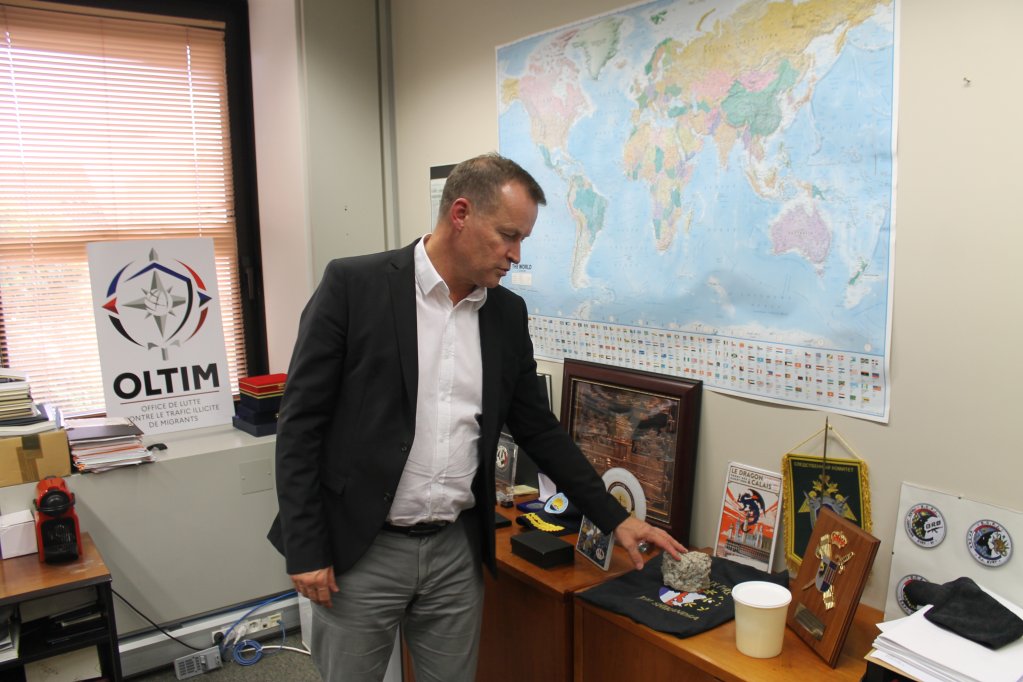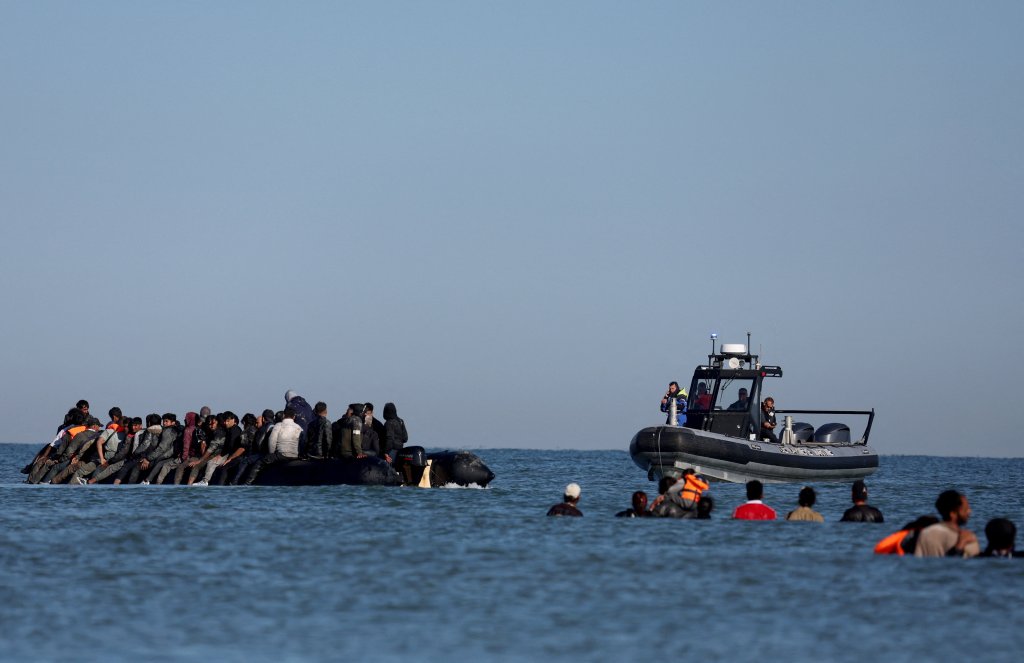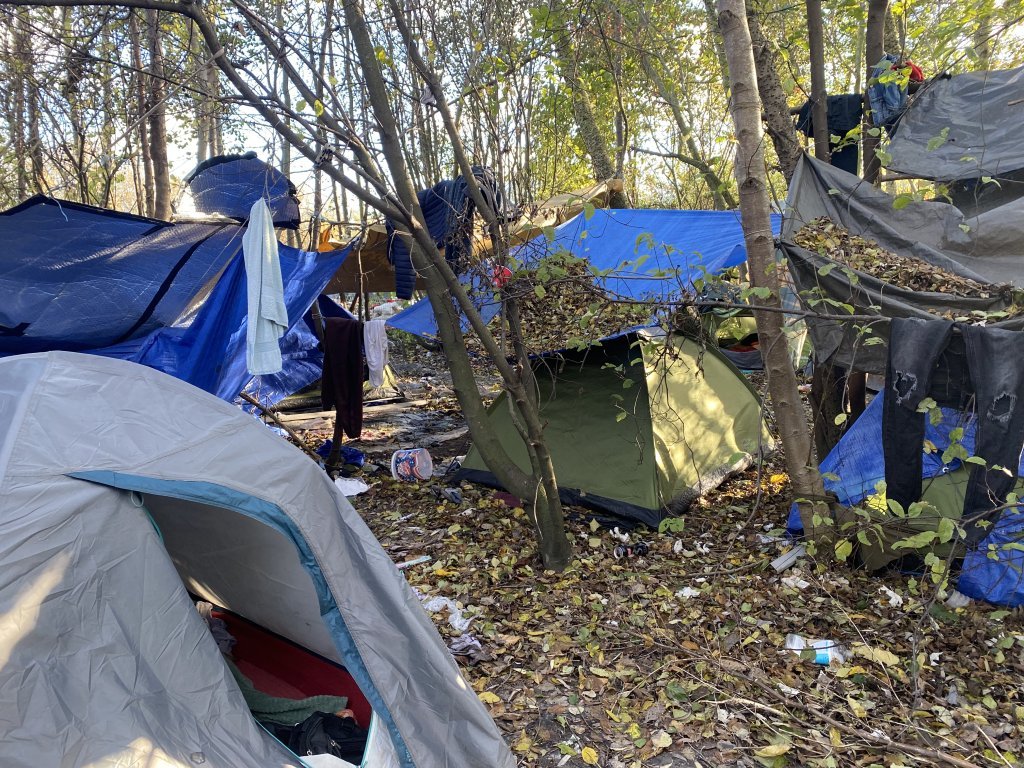InfoMigrants spoke with Xavier Delrieu, head of the Office for the Fight against Illicit Trafficking of Migrants (OLTIM) on the fight against human traffickers, which includes tracking illegal immigration and dismantling small boat networks.
In Lognes, in the eastern suburbs of Paris, nearly 150 specialized investigators pursue human traffickers and dismantle their networks. Seven months after the French Minister of the Interior Bruno Retailleau inaugurated criminal intelligence exchange units (CERTIM), Xavier Delrieu, the head of the Office for the Fight against Illicit Trafficking of Migrants (OLTIM), agreed to answer our questions on the evolution of migrant smuggling.
InfoMigrants: What have been the main crossing points into France of migrants since the beginning of 2025?
Xavier Delrieu: The classic routes are still the same. They include: Italy through the cities of Menton and Montgenèvre, Germany, Belgium and Spain. The number of migrants who enter France from Switzerland has slightly increased.
Many migrants try to reach France from the overseas territories of French Guiana and Mayotte. We recently detained a small sailboat from Tanzania, with 30 or 40 migrants inside, and two kwassa-kwassa [fishing boats used by migrants trying to reach Mayotte, editor’s note]. We also dismantled a network that was bringing migrants in from Madagascar and forcing them into local prostitution networks.
In French Guiana, the migrants are mostly Syrians, Moroccans and some Afghans who take advantage of easier visa procedures in Brazil. They later cross the Oyapock River into French Guiana, and file for asylum there, before reaching Europe by air.

IM: You dismantled 269 criminal networks in 2024. What is the situation like in 2025?
We dismantled 206 networks in the first eight months of 2025, compared to 180 dismantled networks during the same period in 2024. This represents a 14 percent increase.
We’ve also seen an increase in criminal networks along the route to the United Kingdom (UK), with 33 migrant smuggling networks dismantled, compared to 23 during the same period last year. We’ve also identified 34 networks facilitating illegal entry into France and 115 networks helping with illegal residency, particularly with undeclared work and the creation of false documents.
IM: How does visa fraud work for seasonal workers?
This type of fraud has emerged since the visa application process was digitized in 2021. The platform pertains to sectors experiencing labor shortages, especially agriculture and viticulture. Human smuggling networks have been recruiting clients in Algeria and Morocco, offering them the opportunity to travel to Europe at a price of 10,000 to 15,000 euros per person.
A French company was initially involved in the fraud, and they stole the identity of certain companies to order visas, because there weren’t enough inspections. Some traffickers created false companies to be able to bring seasonal workers to France. Most of these workers never worked in the companies.
IM: Over 31,000 migrants have succeeded in crossing the Channel to reach the UK since January. This is more during the entire year of 2023, when 29,400 migrants crossed the Channel. Should the French law enforcement forces change their strategy?
I don’t think so, the rate of interception for "small boats" is about 58 percent.

There are two reasons for the increase: first, if we can’t dismantle the supply chains for boats, there will always be traffickers and merchandise. All the storage sites are in Germany, and we haven’t been effective because there are legal barriers. The Germans can’t launch investigations on networks that traffic nautical material; this doesn’t constitute a crime. They have a limited approach to the notion of criminal organizations. We won’t be able to resolve the small boat problem until we can launch investigations in Germany on the storage of boats.
Read AlsoChannel crossings: Investigation uncovers elaborate supply route across Turkey, Germany and France
Second, there were 123 days of good weather, compared to 107 last year [departures for migrant boats are more numerous when the weather is mild, editor’s note]. "Taxi boats" are becoming increasingly common; they now account for almost half of all crossings. They have a high success rate of about 85 percent. The number of migrants per boat is also increasing; there was an average of 53 migrants per boat last year, now it is 59.
IM: What are the principal nationalities of migrants taking small boats to reach the United Kingdom?
Among the top five nationalities, 21 percent are Eritreans, 14 percent are Afghans, 14 percent are Sudanese, 12 percent are Somalian, and 12 percent are Iranian. A new addition to the list is Kuwaitis (7 percent). Ever since Kuwait revoked the citizenship of more than 42,000 of its nationals, these people, who are now stateless, have emigrated.
The cost of such a journey can cost between 1,500 and 3,000 euros – sometimes even 5,000 euros.
IM: Shootouts have always existed in migrant camps in northern France. What accounts for their increase last summer in the Loon-Plage camp, near Dunkirk?
Loon-Plage is a hotspot, with a mix of different communities – Iraqis, Afghans and Africans. It’s quite volatile.
Read Also'Mom told me to stay away from the guns': InfoMigrants witnesses migrant camp shooting
Kurdish traffickers use guns to enforce the rules of the smuggling operation [the various clans divide up the launch points for the small boats, editor’s note]. There are former Iraqi soldiers and Peshmerga fighters among them. These are men trained in the use of firearms. Shootouts are typical of criminal networks engaged in lucrative activities. When you can make 100,000 euros per boat, and there are 500 boats crossing the English Channel each year, that represents a considerable amount of money.
IM: How do you distinguish between traffickers and migrant smugglers?
Traffickers are detained by our services in the context of organized migrant smuggling. These networks include organizers, financers, logistics coordinators, watchmen, among other roles.

Smugglers don’t belong to any network; they are arrested in the act. They might be people who take advantage of an opportunity, like the driver of a car who brought a migrant to Ventimiglia [on the Italian border, editor’s note] for 300 euros.
IM: Does the corruption of public agents also have an effect on migrant trafficking?
There is a lot of corruption, especially when it comes to fake documents. Sometimes this happens through social media. Some networks offer drugs, false papers, and access to police databases. Otherwise, it's the government official at the prefecture or city hall employee who is involved in creating fraudulent documents. For example, a prefectural official in Grenoble was caught issuing 10-year residency cards in exchange for €15,000.
IM: Is it possible to find a way to counter the Hawala system, central to migrant trafficking but difficult to prove in police investigations?
Hawala is an informal system for transferring money between countries. It operates outside the formal banking system, relying instead on trust between individuals and a network of intermediaries. This makes it a preferred method of payment for criminal organizations.
We have created a financial “task force” to target migrant smuggling operations. The goal is to identify where the money laundered through these operations is being held. We are also conducting in-depth investigations into Hawala businesses, which is complicated because these transactions are inherently untraceable. We know some businesses that rely on this system, but it's difficult to prove that they are operating in tandem with migrant smuggling networks, alongside their legitimate business activities. That’s why sometimes an administrative measure to restrict activity is preferred over a judicial investigation: we conduct a CODAF audit [anti-fraud control, editor’s note] to check for undeclared employment, and then the issue is addressed administratively rather than through the legal system.
French Interior Minister Bruno Retailleau in February officially inaugurated the creation of a new intelligence unit, CERTIM, located within the Oltim building. How does this unit operate?
The idea is to create a criminal intelligence exchange platform in France to improve collaboration in the fight against migrant smuggling.
We initially decided to target Afghan networks because we have a considerable amount of information about them. In our view, they pose a real threat to France and Europe. Many former Taliban fighters have taken control of these criminal networks. They have firearms, and they operate migrant camps in the Balkans. Some of them come to France and kidnap migrants to extort ransom payments from their families. We have already opened about ten investigations into this activity.
